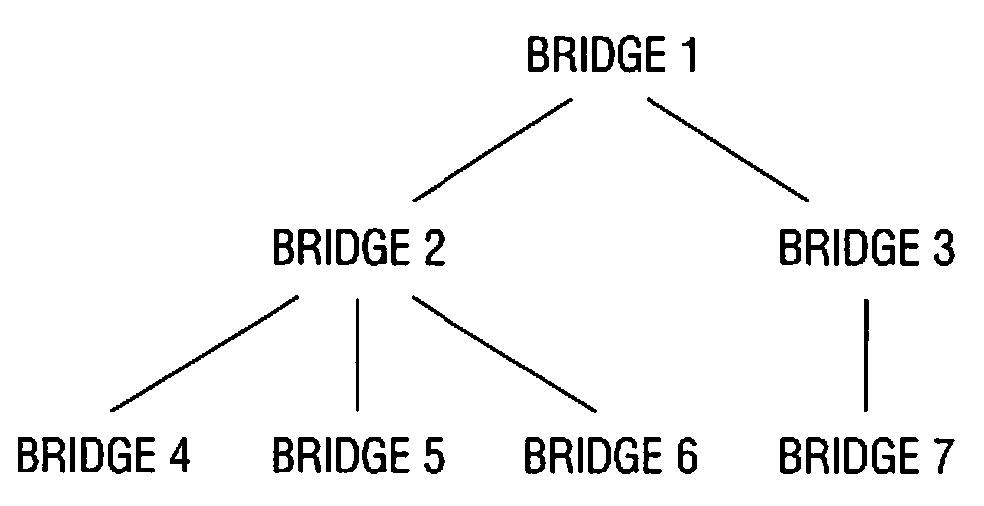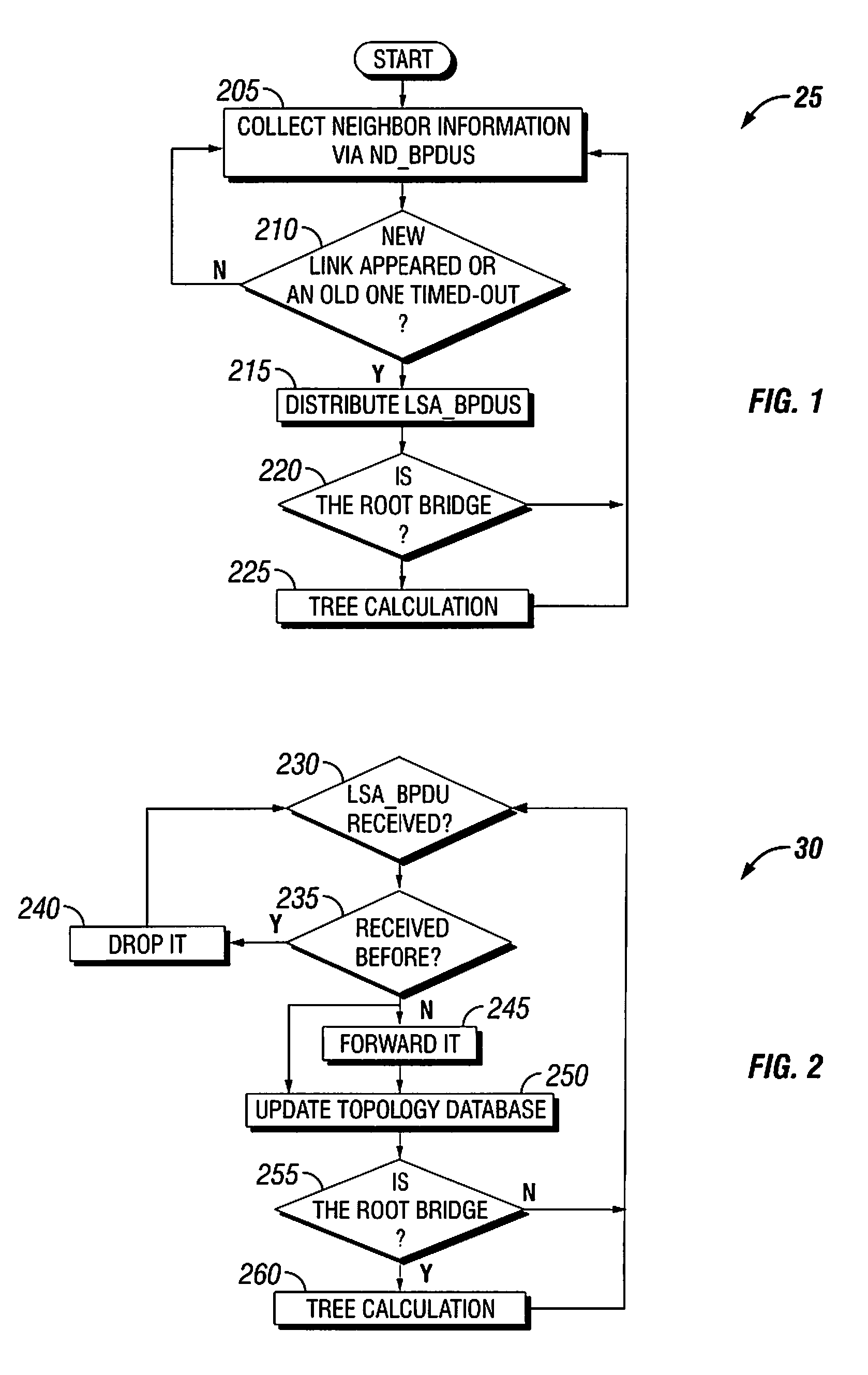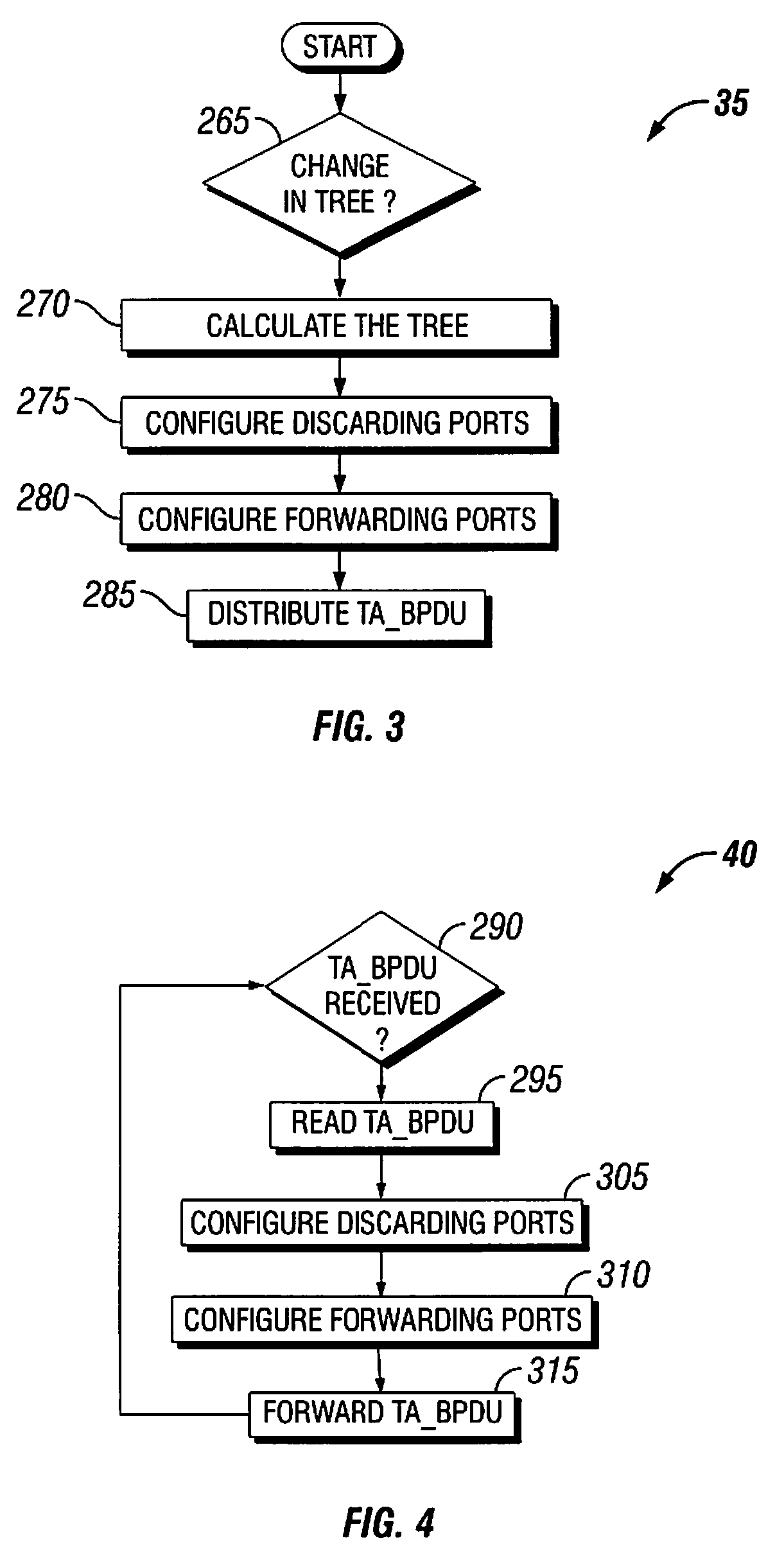Method and apparatus for network tree management
a network tree and tree technology, applied in the direction of electrical equipment, digital transmission, data switching networks, etc., can solve the problems of not being able to achieve the effect not being able to achieve the effect of achieving the effect of improving the recovery tim
- Summary
- Abstract
- Description
- Claims
- Application Information
AI Technical Summary
Benefits of technology
Problems solved by technology
Method used
Image
Examples
Embodiment Construction
[0035]FIGS. 1 through 16, discussed herein, and the various embodiments used to describe the principles of the present invention in this patent document are by way of illustration only and should not be construed in any way to limit the scope of the invention. Those skilled in the art will understand that the principles of the present invention may be implemented in any suitably arranged computer network.
[0036]The present invention is directed to a new approach to facilitating the management of data traffic flow in a network, such as an Ethernet LAN (local area network), using a spanning tree active topology. FIG. 16 is a flow diagram illustrating a method 20 of facilitating data traffic flow according to an embodiment of the present invention. At START it is assumed that a network operable to communicate data via a plurality of bridges has been formed, such as the one shown in FIG. 15. The network is, for example, an Ethernet LAN network operable according to the IEEE 802 family of...
PUM
 Login to View More
Login to View More Abstract
Description
Claims
Application Information
 Login to View More
Login to View More - R&D
- Intellectual Property
- Life Sciences
- Materials
- Tech Scout
- Unparalleled Data Quality
- Higher Quality Content
- 60% Fewer Hallucinations
Browse by: Latest US Patents, China's latest patents, Technical Efficacy Thesaurus, Application Domain, Technology Topic, Popular Technical Reports.
© 2025 PatSnap. All rights reserved.Legal|Privacy policy|Modern Slavery Act Transparency Statement|Sitemap|About US| Contact US: help@patsnap.com



